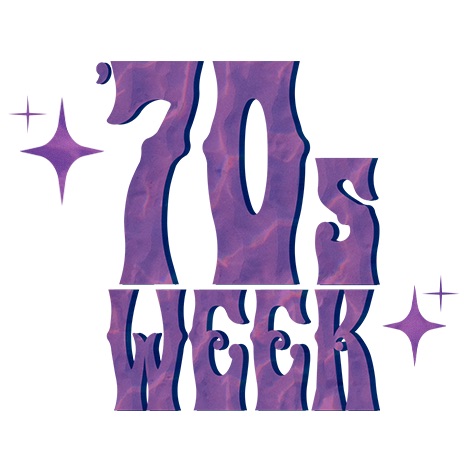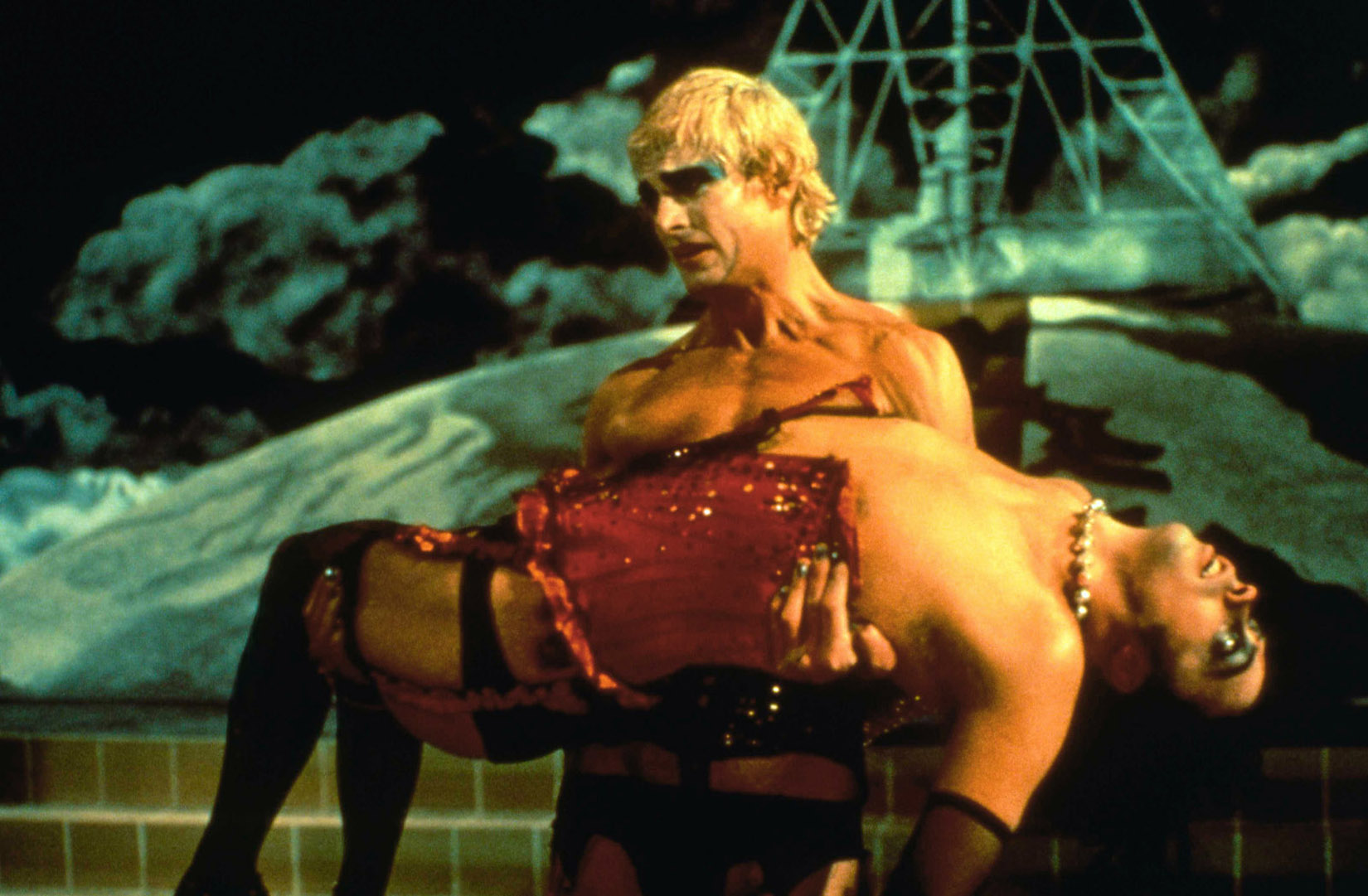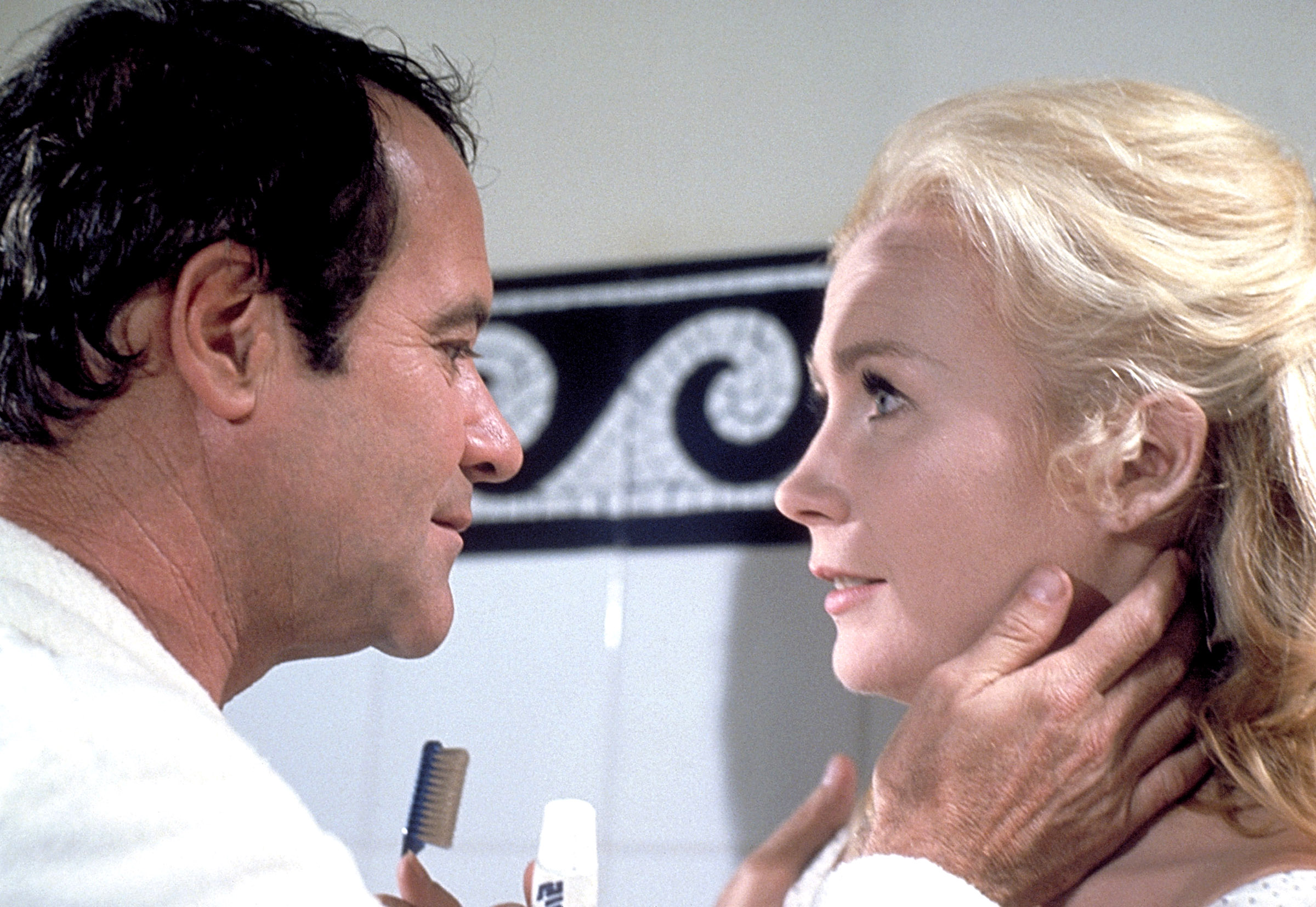
If the 1980s saw the increased proliferation of anime in the west, and the 2000s saw them becoming part of the cultural zeitgeist, the 1970s were a period of great change for the industry at home. In a piece for Sight and Sound in its Summer 2020 issue, historian Jonathan Clements traces technological and ideological changes through each decade — the ’70s, in his words, saw anime as a TV phenomenon, “developing a series of tropes and styles designed to stretch limited budgets as far as they would go.”
The dominance of television and the sparseness of film production — predicated on the market created by Osamu Tezuka and the cheap production of “Astro Boy” — is hard to overstate, even if we try to steer the conversation back to cinema. When surveying the best anime films of the 1970s, one has to reckon with the fact that some of the TV compilation films of the ’70s are crucially important to the history of anime. TV films like Isao Takahata’s “Heidi: Girl of the Alps,” and his later work “Anne of Green Gables,” both key to the filmography of one of animation’s most vital directors. In that light, here are some of the best films that 1970s anime had to offer, along with a handful of TV shows that are impossible to ignore in any survey of the art form’s greatest hits. Both are presented in chronological order.
“Animal Treasure Island” (dir. Ikeda Hiroshi, 1971)
“Treasure Island” is a rather irresistible adventure as it is (another director on this list, Osamu Dezaki, took his own stab at the Robert Louis Stevenson classic in 1978), and this adaptation from director Hiroshi Ikeda finds its all-ages appeal by building the cast with mostly animals — the exception being Jim Hawkins and his friend Cathy. The animation and art direction feels very classical, as is the choice of adapting this tale in the first place. Along with Yasuji Mori, Hayao Miyazaki is credited with some of the design work, and with that name in mind you can see some familiar elements amidst the charming chaos of “Animal Treasure Island”: the presentation of the pirate crew feels in keeping with those in “Castle in the Sky” and perhaps even “Porco Rosso.” It’s a fun adventure on its own merits however, as Ikeda’s direction is energetic from beginning to end.
“Tomorrow’s Joe” (1971)
Osamu Dezaki’s visual innovations still echo throughout anime, and the imagery of “Tomorrow’s Joe” still lives in the minds of many an artist (shout out to my favorite parody: “Akiba Maid War”). Though Dezaki would go on to evolve his style considerably (see: the dazzling “Rose of Versailles”, or later films like “Space Adventure Cobra”), this breakout series retains its power. Some of that comes from how Dezaki underlines his most impact imagery — even before the sequel series’s iconic image of Joe slumped over with a smile on his face. Just look at the fight with his rival Rikiishi in episodes 48-52 and its painful aftermath. To pick a contemporary western comparison point in something like “Rocky” (1976), “Tomorrow’s Joe” maintains an interest in the tension between the opportunities that boxing avails to working class men, as well as the dangers: Joe’s eye-patch-wearing mentor Danpei is a constant reminder of this, even before the show brings the physical perils of the ring into the forefront of its story. Make sure to check out recent sci-fi remake “Megalobox,” as well as Dezaki’s other television work from this decade.
“Belladonna of Sadness” (dir. Eiichi Yamamoto, 1973)
This woozy watercolor nightmare from director Eiichi Yamamoto, produced at Osamu Tezuka’s studio Mushi Pro during its push into adult animated film, stands out not just for its craft, but also for how that craft underlines its political message. Anime historian and essayist Helen McCarthy calls the film “an almost perfect visual summary of the feminine side of 1970s artistic counterculture.” McCarthy goes on to highlight how its psychedelic visual craft shows “unflinching acknowledgement of the establishment’s addiction to violent oppression, and its promotion of sexual freedom as both a metaphor for and a weapon of revolution.” It’s not simply just a “pretty” film to look at, but its imagery — stitched together with quite limited animation — is uniquely discomforting.
“Farewell to Space Battleship Yamoto: Warriors of Love” (dirs.
Toshio Masuda & Leiji Matsumoto)
A film which would eventually become a victim of its own success (thrown out as non-canon so the “Yamato” series could continue), the lavishly-titled “Farewell to Space Battleship Yamato: Warriors of Love” is still a remarkable piece of work on its own. The “Space Battleship Yamato”TV series, created by Yoshinobu Nishizaki, Leiji Matsumoto and Eiichi Yamamoto, is a lynchpin of ’70s animation, and even though it’s no longer “canon,” “Farewell to Yamato”is an enthralling snapshot of why. (The first “Yamato” film is a compilation, so even despite its historic popularity and success, we’ve elected to omit it).
Directed by Toshio Masuda and Matsumoto, “Farewell to Yamato”sees the surviving crew getting back together and back into space to resist a new threat, an empire which has been going all over the galaxy capturing and enslaving whoever it finds. The Yamato is a literal space battleship — shaped like a big boat in an idiosyncratic combo of old school naval warfare in the sea of stars, as the film calls it.
As their film captures rather classical and grandiose images of war in a fantastical setting, Matsuda and Matsumoto continue to remind how small the conflict is in the history of the cosmos, and therefore emphasizes the tragedy of people choosing violence and imperialism over life. “In the immense extent of space, it was just a short moment of confusion,” the narrator says of the Yamato’s battle with Gamillas. Both this and “Galaxy Express 999” begin to stress humanity’s smallness in the tapestry of the cosmos, and go on to examine the hubris of thinking it all revolves around us. But where “Galaxy Express” is hopeful, “Farewell”is melancholic — the final half hour a heart-wrenching final stand for the ship’s plucky crew.
“Ringing Bell” (dir. Masami Hata, 1978)
This 45 minute fable is surprisingly severe, its idyllic beginnings and cheery, rubber-limbed animal characters giving way to a dark tale about the death of innocence. The young lamb Chirin learns about the cruelty of the world outside his pasture after his mother is killed by a wolf. Chirin follows the wolf, learning to fight while traveling with him — and waiting for the opportunity to take his revenge. (Modern anime fans might recognise shades of the first season of “Vinland Saga,” where a young viking boy travels with his father’s killer for the same reasons.) It’s not exactly a “dig two graves” kind of revenge story, nor a conservationist story in the same way something like “Bambi” (1942) is. But it’s still disarming with its approach to violence: The fearsome visage of Chirin by the film’s end speaks volumes about how it changes a person.
“Taro the Dragon Boy” (dir. Kiriro Urayama, 1979)
This adaptation of traditional folklore — written by Isao Takahata — follows a young boy as he embarks on a number of little journeys with the overarching goal of rescuing his mother from her transformation into a dragon. Along the way, he has to contend with the famine afflicting his village due to their inability to grow rice, a couple of demons, and various other forces natural, supernatural, and even human. Realized with breathtaking, inky watercolor background art (an element which critic Jasper Sharp highlights in contrast to the more whimsical animation and character designs), the foreboding of the world which Taro ventures out into makes his maturation stand out even more: leaving behind his prior laziness and venturing into an intimidating landscape, and learning to help his fellow villagers even as that gets increasingly difficult.
“Aim for the Ace!” (dir. Osamu Dezaki, 1979)
So much of Osamu Dezaki’s work was seminal to the art associated with the anime industry as we know it, and even limiting this list to just two pieces of his work from the ’70s requires incredible restraint. The film version of “Aim for the Ace!” is a quickened retelling of the events of the 1973 anime series (also directed by Dezaki), following budding tennis player Hiromi Oka as she struggles to become the best in her field while developing a rivalry with a brilliant player nicknamed “Madame Butterfly.” Dezaki’s wild, impressionistic methods livened up anything and everything; in “Aim For The Ace!” he brought just as much visual flair and dramatic weight to a story about tennis as he would for stories about assassins, boxers, royal guards.
“Galaxy Express 999: The Movie” (dir. Rintaro, 1979)
The Galaxy Express 999 (pronounced “three-nine” by the film’s characters) is a train that stops for one day on every planet on its journey between Earth and its terminus, a planet that manufactures machine bodies. The wealthy people of Earth have been using those bodies to transcend mortal boundaries and live forever — and one young boy Tetsuro boards the train to seek a robot body of his own. He’s looking for the power to avenge the death of his mother. Acclaimed director Rintaro adapts Leiji Matsumoto’s manga, which fits into the “Leijiverse” — a web of characters in sci-fi stories from Matsumoto, iincluding one Space Pirate Captain Harlock, who features prominently here. But “Galaxy Express 999” doesn’t require any homework to enjoy. Those characters at the edges serve to show how vast the universe is, and how many stories are happening out of our line of sight.
Glimpsing those stories helps Tetsuro’s vengeful goal soften over time, and Rintaro’s craft makes it easy to understand why: beautiful imagery and a sweeping, romantic score from Nozomu Aoki emphasizes the hope that Matsumoto still has for humanity’s potential, despite our abuse of technology. The anachronistic simplicity of the Galaxy Express — a spaceship deliberately and nostalgically modeled after a steam train — says plenty. It’s a means to connect humanity and hold us together, and to see the world from different points of view, rather than to hubristically try and defeat the natural order.
“Mobile Suit Gundam” (1979)
Space operas were big in the 70s, but “Mobile Suit Gundam” is perhaps the anime space opera. Though it’s known as part of a movement towards “real robot” mecha anime (a more more militaristic pivot from the super robots of “Mazinger Z” or “Getter Robo”), creator Yoshiyuki Tomino doesn’t skimp on the fantasy. On the contrary, “Gundam”’s most spectacular moments lie in the metaphysical as much as they do the more tangible consequences of the heated conflict between the Earth Federation and the fascistic Zeon Empire.
In a piece comparing “Gundam” with mecha contemporaries like “Super Dimension Fortress Macross,” anime historian Andrew Osmond described the appeal of Tomino’s series: “high adventure with added grit, between ‘Star Wars’ and the vintage fiction of Robert Heinlein. There are childish elements – cartoony comic-relief kids, a cute ball-robot called Haro who’d become Gundam’s enduring mascot. But the show’s underpinned by Tomino’s adult mindset.” That mindset is continually changing, but it’s always been clear that “Gundam” has a lot on its mind.
In some ways this is a continuation of the tension of Matsumoto’s work on something like “Galaxy Express 999,” with humanity showing the potential to elevate itself with its creations, but also undermining itself with an attraction to assimilation, imperialism, domination. More than just a part of history though, “Mobile Suit Gundam” is simply exciting to watch: the out-of-body experience of “Newtypes” (evolved humans) connecting with each other, the drama of Char Aznable’s quest for revenge (and famously homoerotic rivalry with Amuro Ray). Not to mention the cool robots.
“Lupin the III: The Castle of Cagliostro” (dir. Hayao Miyazaki, 1979)
While our other anime lists have mostly adhered to a loose “no Ghibli” rule in an effort to widen the tent, Hayao Miyazaki’s “Lupin III: The Castle of Cagliostro” actually predates the studio that has since become synonymous with his work. This feature directorial debut didn’t exactly lay a template for Ghibli, but images from its raucous opening are constantly being recollected, even within a month of this piece at the time of writing: the opening episode of season 2 of “My Dress Up Darling” (2022-present) kicks off with extended homage to the casino heist, while western films like “The Bad Guys 2” openly reference the same work. It’s no wonder: the car-chase in Lupin’s deceptively nimble Fiat is one of the best ever put to film, let alone drawn by hand.
Following closely after Soji Yoshikawa’s “Lupin III: The Mystery of Mamo” (1978), “Cagliostro” is the cap to a formative decade for one of anime’s biggest creative names. By this point, Miyazaki had already worked on episodes of the Lupin III TV series alongside fellow Ghibli founder and mentor Isao Takahata (see also: their 1972 feature “Panda! Go Panda!”). Miyazaki also worked on Takahata’s classic “Heidi: Girl of the Alps” (1974), contributing layouts and design work, and again on “Anne of Green Gables” (1979). Miyazaki would then create the equally influential “Future Boy Conan” (1978) – all of the above history recounted in fascinating detail by Animation Obsessive. The writers carry on to mention the beginnings of a creative split between the two: Takahata desiring naturalism while Miyazaki yearned for cartoonish hijinks: “The Castle of Cagliostro” is a thrilling expansion on the latter, as it expands gentleman thief theatrics of the show to blockbuster scale.
IndieWire’s ’70s Week is presented by Bleecker Street’s “RELAY.” Riz Ahmed plays a world class “fixer” who specializes in brokering lucrative payoffs between corrupt corporations and the individuals who threaten their ruin. IndieWire calls “RELAY” “sharp, fun, and smartly entertaining from its first scene to its final twist, ‘RELAY’ is a modern paranoid thriller that harkens back to the genre’s ’70s heyday.” From director David Mackenzie (“Hell or High Water”) and also starring Lily James, in theaters August 22.



